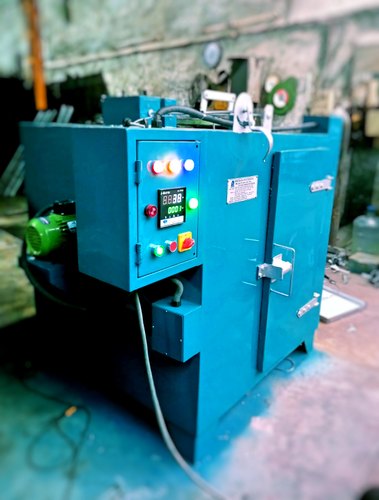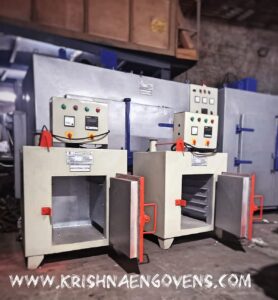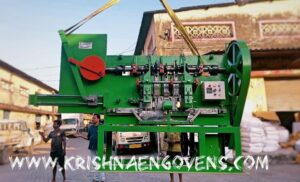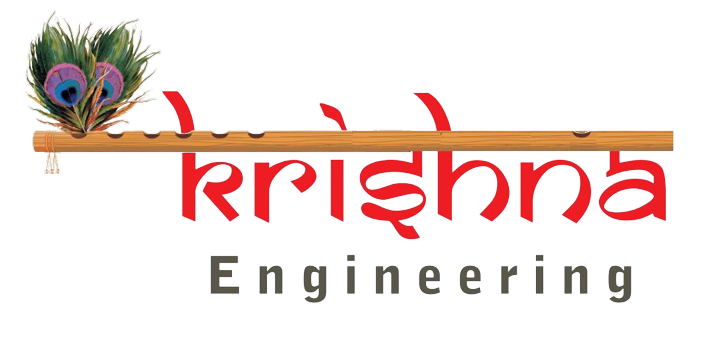What is Pre - Heating Oven ?
Preheating an oven generally takes about 12-15 minutes to reach 350ºF, although the type and size of your oven may cause this time to vary. Preheating your oven is essential to getting great cooking results.

Preheating your oven helps ensure your food goes from refrigerator cold to blazing hot more quickly spending as little time in the danger zone as possible. And even if this is a short amount of time, just know that some bacteria can multiply in the danger zone in as little as 20 minutes.
A pre-heating oven, also known as a preheating chamber or preheating furnace, is an industrial oven used to raise the temperature of materials or components before they undergo subsequent processes or treatments. The purpose of pre-heating is to prepare the material for the next stage by reducing thermal shock, improving workability, or enhancing the effectiveness of subsequent processes.
Here’s a general overview of how a pre-heating oven works:
Loading: The material or component to be preheated is loaded into the pre-heating oven. This can include metal parts, ceramics, plastics, composites, or any other material that requires a specific temperature prior to further processing.
Temperature Control: The pre-heating oven is equipped with heating elements, such as electric heaters, gas burners, or induction coils, that generate heat to raise the oven’s internal temperature. The oven may have temperature sensors and controllers to regulate and maintain the desired temperature accurately.
Heating: The oven is heated to the prescribed temperature required for pre-heating the material. The temperature and heating time vary depending on factors such as the material type, size, desired pre-heating effect, and subsequent processes involved.
Heat Distribution: The pre-heating oven is designed to ensure even heat distribution throughout the chamber to prevent localized hot spots or temperature variations. This is often achieved through the use of fans or other means of circulating air or heat transfer media within the oven.
Pre-heating Process: The material remains inside the pre-heating oven for a specified duration to reach the desired temperature. This allows the material to become more pliable, expand or contract, release internal stresses, or undergo any necessary transformations required for subsequent processes.
Cooling and Unloading: After the pre-heating process is complete, the oven may have a cooling phase to gradually reduce the temperature before the material is unloaded. The material is then ready for further processing, such as forming, shaping, welding, heat treatment, or any other process that requires the material to be at an elevated temperature.
Pre-heating ovens are utilized in various industries, including metalworking, plastics manufacturing, ceramics production, glass manufacturing, and many more. They help optimize subsequent manufacturing processes by preparing materials or components, improving their workability, reducing defects, and ensuring better quality and performance in the final product.
Worldwide Exports Location:
Following Countries: Afghanistan, Albania, Algeria, Andorra, Angola, Antigua And Barbuda, Argentina, Armenia, Australia, Austria, Azerbaijan, Bahamas, Bahrain, Bangladesh, Barbados, Belarus, Belgium, Belize, Benin, Bhutan, Bolivia, Bosnia And Herzegovina, Botswana, Brazil, Brunei, Bulgaria, Burkina Faso, Burundi, Cabo Verde, Cambodia, Cameroon, Canada, Central African Republic (CAR), Chad, Chile, Colombia, Comoros, Democratic Republic Of The Congo, Republic Of The Congo, Costa Rica, Cote D’Ivoire, Croatia, Cuba, Cyprus, Czech Republic, Denmark, Djibouti, Dominica, Dominican Republic, Ecuador, Egypt, El Salvador, Equatorial Guinea, Eritrea, Estonia, Ethiopia, Fiji, Finland, France, Gabon, Gambia, Georgia, Germany, Ghana, Greece, Grenada, Guatemala, Guinea, Guinea-Bissau, Guyana, Haiti, Honduras, Hungary, Iceland, India, Indonesia, Iran, Iraq, Ireland, Israel, Italy, Jamaica, Japan, Jordan, Kazakhstan, Kenya, Kiribati, Kosovo, Kuwait, Kyrgyzstan, Laos, Latvia, Lebanon, Lesotho, Liberia, Libya, Liechtenstein, Lithuania, Luxembourg, Macedonia (FYROM), Madagascar, Malawi, Malaysia, Maldives, Mali, Malta, Marshall Islands, Mauritania, Mauritius, Mexico, Micronesia, Moldova, Monaco, Mongolia, Montenegro, Morocco, Mozambique, Myanmar (Burma), Namibia, Nauru, Nepal, Netherlands, New Zealand, Nicaragua, Niger, Nigeria, North Korea, Norway, Oman, Pakistan, Palau, Palestine, Panama, Papua New Guinea, Paraguay, Peru, Philippines, Poland, Portugal, Qatar, Romania, Russia, Rwanda, Saint Kitts And Nevis, Saint Lucia, Saint Vincent And The Grenadines, Samoa, San Marino, Sao Tome And Principe, Saudi Arabia, Senegal, Serbia, Seychelles, Sierra Leone, Singapore, Slovakia, Slovenia, Solomon Islands, Somalia, South Africa, South Korea, South Sudan, Spain, Sri Lanka, Sudan, Suriname, Swaziland, Sweden, Switzerland, Syria, Taiwan, Tajikistan, Tanzania, Thailand, Timor-Leste, Togo, Tonga, Trinidad And Tobago, Tunisia, Turkey, Turkmenistan, Tuvalu, Uganda, Ukraine, United Arab Emirates (UAE), United Kingdom (UK), United States Of America (USA), Uruguay, Uzbekistan, Vanuatu, Vatican City (Holy See), Venezuela, Vietnam, Yemen, Zambia, Zimbabwe.
India Location –
Maharashtra, Mumbai, Pune, Nagpur, Nashik, Virar, Palghar, Aurangabad, Bhiwandi, Thane, Amravati, Malegaon, Kolhapur, Nanded, Sangli ,Jalgaon, Akola, Latur, Ahmadnagar, Dhule, Ichalkaranji, Chandrapur, Parbhani, Jalna, Bhusawal, Navi Mumbai, Raigad, Panvel, Bangalore, Karnataka, Ahmedabad, Gujarat, Chennai, Tamil Nadu, Surat, Coimbatore, Vadodara, Indore, Madhya Pradesh, Bhubaneswar, Orissa, Hyderabad, Andhra Pradesh, Jamshedpur, Jharkhand, Kolkata, West Bengal ,Delhi, Jaipur, Rajasthan, Kochi, Kerala, Chandigarh, Punjab, Dehradun, Uttarakhand , Lucknow, Uttar Pradesh, Visakhapatnam, Andhra Pradesh, Guwahati, Assam, Amritsar, Mangalore, Noida, Gurgaon, Haryana, Bhopal, Madhya Pradesh, Aurangabad, Faridabad, Allahabad, Prayagraj, Jodhpur.




